Links to external sources may no longer work as intended. The content may not represent the latest thinking in this area or the Society’s current position on the topic.
Diamond for quantum applications

Theo Murphy meeting organised by Dr Shannon Nicley, Dr Gavin Morley and Professor Ken Haenen.
A discussion on the recent progress of diamond growth and engineering for the creation and optimisation of colour centres, toward the integration of diamond based qubits in quantum systems.
The schedule of talks is available below. An accompanying journal issue has been published in Philosophical Transactions of the Royal Society A.
Attending this event
This meeting has taken place.
Enquiries: contact the Scientific Programmes team
Organisers
Schedule
Chair
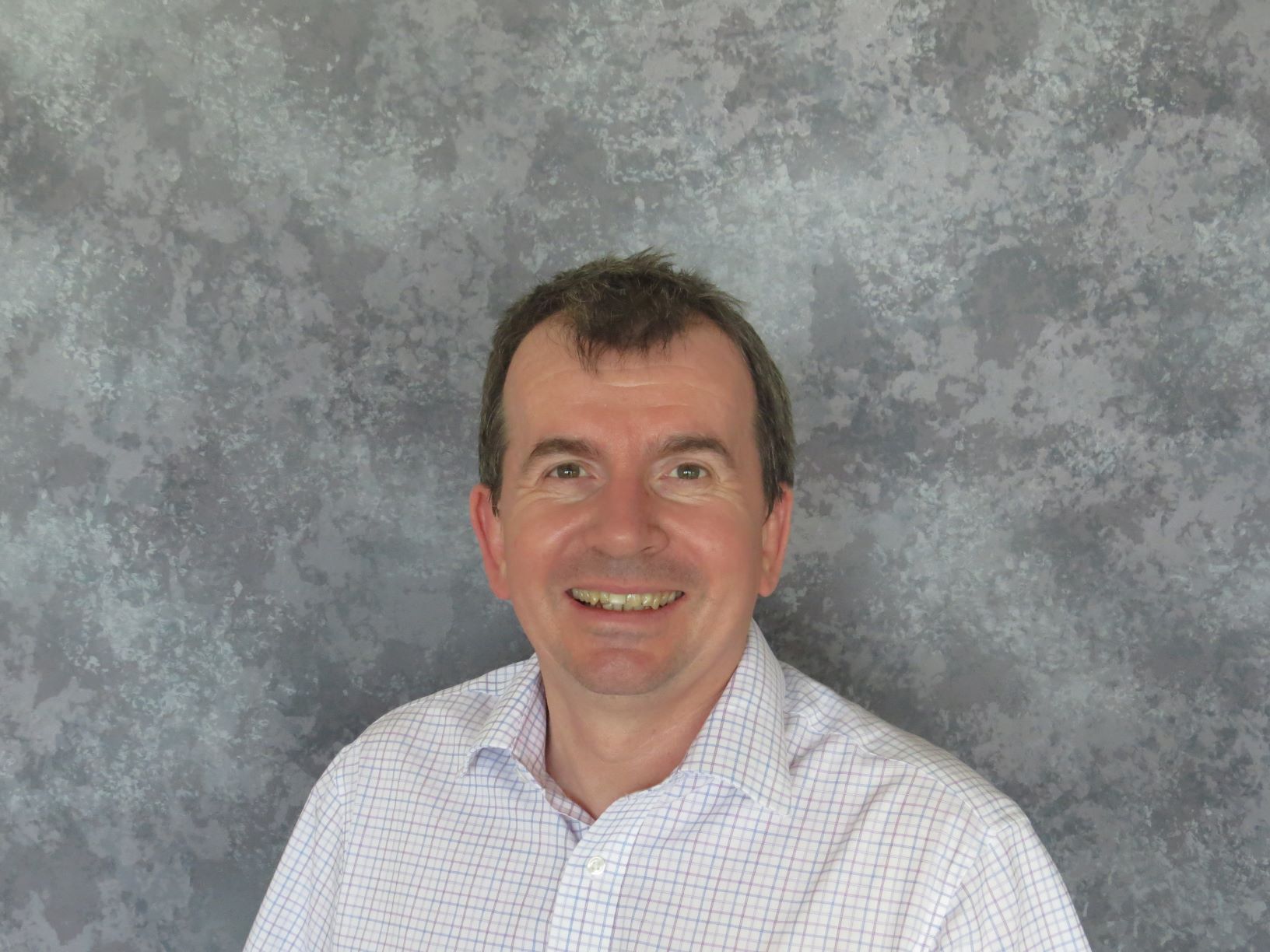
Professor Mark Newton, University of Warwick, UK

Professor Mark Newton, University of Warwick, UK
Mark Newton’s research focuses on; (i) understanding, controlling and exploiting the properties of colour centres and dopant atoms in diamond (quantum technology); (ii) developing sensors that exploit the extreme and unique combination of properties offered by diamond and; (iii) developing new techniques in magnetic and optical spectroscopy. He is currently director of the Engineering and Physical Sciences Research Council (EPSRC) Centres for Doctoral Training (CDT) in Diamond Science and Technology (DST). Mark was winner of the 2017 Royal Society Innovation Award and is currently the head of the Department of Physics at the University of Warwick.
| 08:00 - 08:30 |
Exploring the tin vacancy centre in diamond: charge states, spins and photons
For many applications in the field of quantum information processing stationary qubits are required, providing long-lived spin coherence and suitable level schemes for coherent control and efficient optical read out. In addition, transferring the spin information to indistinguishable single photons is necessary e.g. to distribute entanglement in quantum networks. 
Professor Christoph Becher, Saarland University, Germany

Professor Christoph Becher, Saarland University, GermanyChristoph Becher is a full professor of physics at Saarland University, Saarbrücken, Germany, leading the quantum optics research group. He received his PhD in physics from University of Kaiserslautern, Germany, in 1998 working on generation of non-classical light from semiconductor lasers. Christoph Becher held two postdoctoral positions: at University of California, Santa Barbara (1999-2000) with the first demonstration of single photon emission from self-assembled semiconductor quantum dots and cavity-QED experiments; at University of Innsbruck, Austria (2001-2005), he was part of the team demonstrating the first quantum gate with trapped ions, generation of multi-ion entangled states, implementation of simple quantum algorithms and cavity QED with trapped ions. His research interests are in the field of quantum technologies for quantum communication & sensing, in particular exploration of colour centres in diamond as quantum bits, single photon sources and for quantum sensing applications; diamond-based micro-resonators and single photon nonlinear optics, e.g. quantum frequency conversion for quantum networks. |
|---|---|
| 08:30 - 08:45 | |
| 08:45 - 09:15 |
Ab initio theory of colour centres in diamond
Novel developments in the ab initio theory of solid state defect spins are presented. The nature of the spin-phonon relaxation for the nitrogen-vacancy centre of diamond is identified as a second-order Raman scattering process which can be described as a double Orbach-process at elevated temperatures. Inversion symmetric colour centres identified as the negatively charged magnesium-vacancy and nickel-vacancy defects will be characterised. The magnesium-vacancy centre has a unique electronic structure with competing spin states whereas the predicted qubit properties of nickel-vacancy centre outperform those of the well-known silicon-vacancy centre in diamond. Nickel-related optical and electron paramagnetic resonance centres are associated with the nickel-vacancy defect in its various charged states. 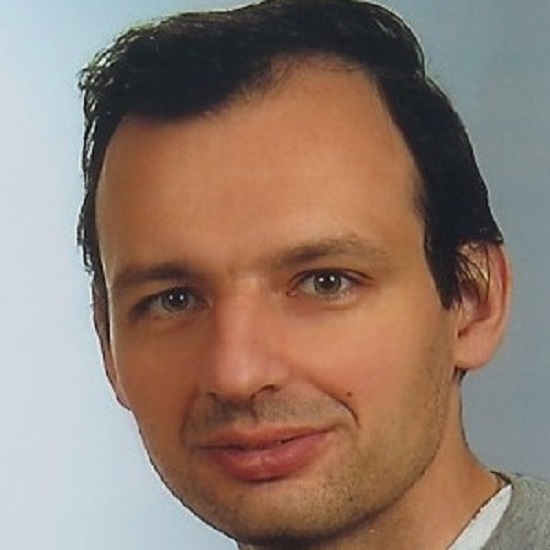
Professor Adam Gali, Hungarian Academy of Sciences, Hungary

Professor Adam Gali, Hungarian Academy of Sciences, HungaryAdam Gali is a chief scientific advisor in Wigner Research Centre, the leader of “Lendület” Semiconductor Research Group, founder of Wigner Advanced Materials Integrated Laboratory (ADMIL) and Optically Detected Magnetic Resonance Laboratory for Quantum Technology, an associate professor at Budapest University of Technology and Economics, Doctor of Science of the Hungarian Academy of Sciences. He studies the magneto-optical properties of point defects in semiconductors and semiconductor nanostructures by means of ab initio methods and experimental techniques, to develop efficient biomarkers, solar cells and solid state defect quantum bits. He recently has developed and implemented methods to fully characterize nitrogen-vacancy centre in diamond from first principles methods that can be applied to other solid state defect quantum bits such as divacancy in silicon carbide and other defects in three- and two-dimensional solids. |
| 09:15 - 09:30 | Discussion |
| 09:30 - 10:00 | Coffee break |
| 10:00 - 10:30 |
Shedding light on spins: diamond for quantum networks
Optically active spins in solids are often considered prime candidates for scalable and feasible quantum-optical devices. Numerous material platforms including diamond, semiconductors, and atomically thin 2d materials are investigated, where each platform brings their own advantages along with their challenges. Professor Atatüre will provide a snapshot of current progress on novel colour centres in diamond and discuss their imminent challenges. 
Professor Mete Atatüre, University of Cambridge, UK

Professor Mete Atatüre, University of Cambridge, UKMete Atatüre received his PhD from the Quantum Imaging Laboratory at Boston University and then joined the Quantum Photonics Group at ETH Zurich as a postdoctoral fellow. He has been at the Cavendish Laboratory in Cambridge since 2007. His research efforts include optical control of spin-photon interfaces in solids, development of nanoscale quantum sensors and investigations of novel quantum materials. He is a Fellow of the Institute of Physics, Optica, the Turkish Science Academy and Academia Europaea. |
| 10:30 - 10:45 | Discussion |
| 10:45 - 11:15 |
Towards distributed quantum computation with spins in diamond
Electron-nuclear spin systems based on optically active defects in diamond provide a promising platform for distributed quantum simulations and computation. In this approach, optically active defect spins are used to form multi-qubit processors that can be linked together in a network through photonic links. Quantum error correction and computations are then distributed over the network. In this talk Dr Taminiau will introduce such spin-based distributed quantum computations and present their recent progress. In particular, they have recently shown that it is possible to control large numbers of nuclear spins around a single NV centre, and to use these qubits for quantum simulations of many-body physics and for encoding fault-tolerant logical qubits. 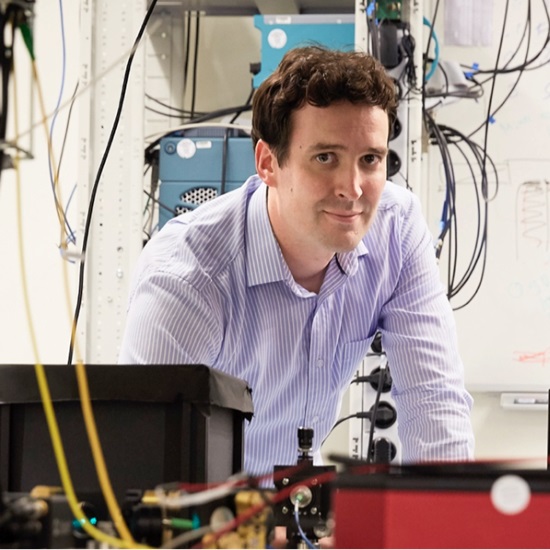
Tim Hugo Taminiau, QuTech, Delft University of Technology, The Netherlands

Tim Hugo Taminiau, QuTech, Delft University of Technology, The NetherlandsTim Taminiau is a PI at QuTech at the Delft University of Technology. His group (established in 2015) uses solid-state defect spins to investigate the fundamentals of quantum information and the physics of coupled spin systems. He graduated from the University of Twente in 2005 and obtained a PhD at the Institut de Ciències Fotòniques (ICFO) in Barcelona. Before returning to the Netherlands as a Marie Curie fellow in 2011, Tim investigated optically active defects at the California Institute of Technology and Brown University. In 2015, he was awarded the Fresnel prize for fundamental contributions to quantum optics and electronics. |
| 11:15 - 11:30 | Discussion |
| 11:30 - 12:35 | Lunch break |
Chair

Professor Jason Smith, University of Oxford, UK

Professor Jason Smith, University of Oxford, UK
Jason Smith is Professor of Photonic Materials and Devices in Oxford’s Department of Materials, with 30 years of research experience in photonics and condensed matter physics. He has authored 120 papers with >6800 citations (h=45, Google Scholar) and is the founding editor-in-chief of the journal Materials for Quantum Technology, published by the Institute of Physics Publishing. He is currently a workpackage leader for diamond colour centre quantum computing in the EPSRC Hub in Quantum Computing and Simulation. Jason is keen on technology transfer and widening participation in science. In his spare time, Jason runs and plays golf, sometimes both at once.
| 12:35 - 13:05 |
Fabrication of defect centres for quantum information processing and sensor technology
Defect centres in materials with large band gaps, especially in diamond and SiC, have proven to be excellent candidates for so-called qubits in quantum information and detection. Ion implantation is crucial here as it is the only way to fabricate qubits with high lateral resolution in materials such as diamond. In the talk, the techniques of deterministic single ion implantation will be discussed, and Professor Meijer will present a mobile quantum computer based on this technology. 
Professor Jan Meijer, University of Leipzig, Germany

Professor Jan Meijer, University of Leipzig, GermanyProfessor Meijer studied physics and astronomy at the University of Münster and received his doctoral thesis at the University of Bochum. In 2004 he became the managing director of the accelerator and isotope laboratory at Bochum. In 2013, he accepted the call of the University of Leipzig to a professorship in the Applied Quantum Systems Department. The main focus of Professor Meijer’s work is the deterministic implantation and assembling of single ions with lateral resolution of a few nanometres. He fabricated the first artificial NV centres in diamond by implantation of nitrogen, as well as the first entangled quantum system at room temperature together with the University of Stuttgart. His group is specialised in the production of defects using ion beams as well as quantum optics to investigate the functionality of colour centres for sensing and quantum information applications. |
|---|---|
| 13:05 - 13:20 | Discussion |
| 13:20 - 13:50 |
Exploring and exploiting diamond surface band bending
The real world applications of diamond quantum sensors require optically active defects to be increasingly located within nanometres of the diamond surface, where their quantum properties such as coherence time, charge state stability and spectral width can suffer significant degradation. I will detail our efforts to explore the origins of these surface noise and band-bending effects, through a novel combination of surface spectroscopy and defect-based electromagnetic measurements. I will then present our efforts to engineer and exploit these phenomena to enhance the sensitivity of near-surface NV systems for biological systems. 
Dr Alastair Stacey, RMIT University, Australia

Dr Alastair Stacey, RMIT University, AustraliaAlastair is a Senior Research Fellow at RMIT University and an industry consultant. He has experience in the diamond synthesis industry, and has researched the use of diamond in a variety of fields, from bionics to mechanical applications. Alastair has spent most of his academic career investigating diamond materials science for quantum technologies. He has a particular interest in the application of surface science techniques for diagnosing and improving coherence properties near the diamond surface. His most recent foci are atom scale fabrication procedures for quantum computing co-processors and bulk doping control for quantum sensors. Alastair is currently helping to setup a diamond synthesis programme at the US Princeton Plasma Physics Laboratory, and will divide his time between this facility and his home institution in Australia. |
| 13:50 - 14:05 | Discussion |
| 14:05 - 14:30 | Tea break |
| 14:30 - 15:00 |
Laser writing and ion implantation of colour centres for quantum technologies
The Nitrogen Vacancy centre in its negatively charged state (NV) became the most established quantum emitter for the development of proof-of-concept quantum devices, in particular in the field of quantum sensing. The performance of NV-based quantum sensors strictly depends on the concentration of colour centres in the sensing ensemble, making it fundamental the possibility to control such concentration. An emerging technique for the formation of NV ensembles on demand is femtosecond laser writing, in which static exposures allow the formation of vacancies and a consequent annealing permits the formation of NVs thanks to the nitrogen pre-existing in diamond. In this work, we will discuss how laser writing can be used to achieve high concentration of NVs in diamond, aligned to laser written photonics for enhanced interaction. In addition, we will introduce a hybrid method of shallow ion implantation of quantum emitters into laser written photonics for novel quantum sensing devices. 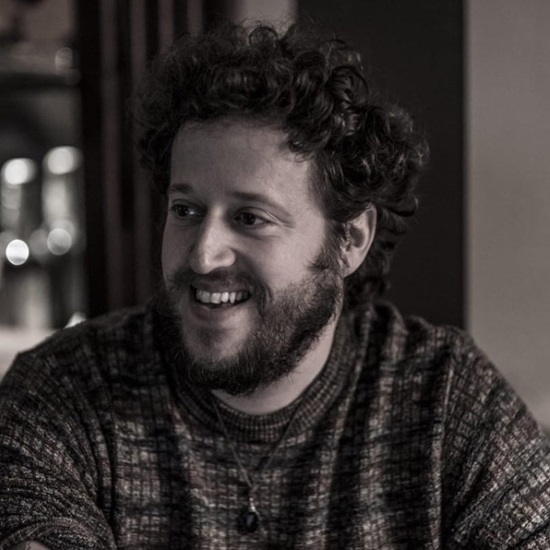
Dr Shane Eaton, IFN Milano, Italy

Dr Shane Eaton, IFN Milano, ItalyShane Eaton received a Bachelor’s of Applied Science degree in Engineering Physics from the University of British Columbia in 2002, and a PhD in Electrical Engineering from the University of Toronto in 2008. He is currently a permanent researcher with the Institute for Photonics and Nanotechnologies in Milan, Italy, where he applies femtosecond laser fabrication to form microdevices in glasses and crystals. He has an h-index of 27 and more than 70 journal papers, with his first paper exploring the role of repetition on femtosecond laser microfabrication in glasses having been cited over 700 times. |
| 15:00 - 15:15 | Discussion |
| 15:15 - 15:45 |
Identification and deterministic creation of next-generation quantum bits in synthetic diamond
The development of a truly scalable quantum information processing (QIP) platform, so far, has been impeded by a lack of qubits with long coherence times and high-quality optical interfaces. Crystal defects in diamond, specifically the nitrogen vacancy (NV) and group-IV vacancy (SiV, GeV, SnV) centers have emerged as leading qubit candidates but face several challenges such as poor optical quality and susceptibility to spectral diffusion (NV), a requirement for dilution refrigeration to reach sufficiently long spin decoherence (SiV), low controllability (GeV, SnV), or a lack of deterministic creation (SiV, SnV, GeV). Nevertheless, past detailed studies of these systems now enable a more targeted search for new defects in diamond with optimized properties for QIP applications. We here report on one of these candidates, the nickel vacancy (NiV) defect in diamond, and present first fluorescence spectroscopic measurements, demonstrating the NiV’s favorable optical properties. Through magneto-optical studies and group-theoretical modelling we confirm the center’s electronic properties and show first results hinting towards favorable spin properties. Finally, we will discuss the possibility of deterministic fabrication of NiVs via multiphoton laser writing in combination with growth of bespoke CVD material to further enable a future scalable QIP platform based on NiV defects in diamond. 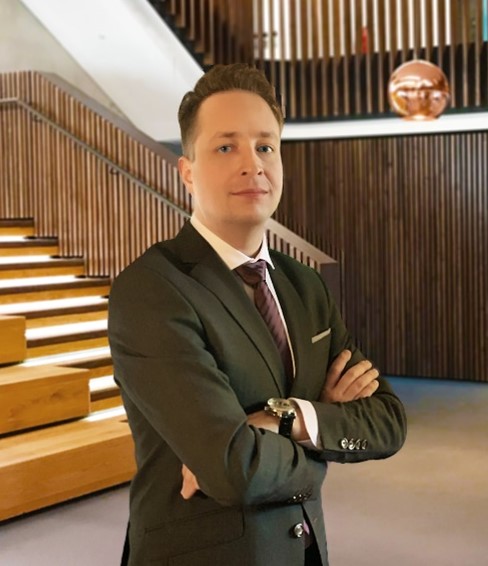
Professor Dr Jonas N. Becker, Michigan State University, USA and Fraunhofer USA Center Midwest, USA

Professor Dr Jonas N. Becker, Michigan State University, USA and Fraunhofer USA Center Midwest, USAJonas Becker is the Jerry Cowen Chair of Experimental Physics at Michigan State University where he leads the Solid-State Quantum Optics Group (S2QO) in the recently founded interdisciplinary Quantum Optical Devices (QuOD) laboratory. He is also affiliated with the Fraunhofer USA Center Midwest. His research focuses on experimental quantum information science using optically-active systems in solid-state host materials such as defects in synthetic diamond and rare earth-doped crystals. |
| 15:45 - 16:00 | Discussion |
| 16:00 - 17:00 | Poster session |
Chair
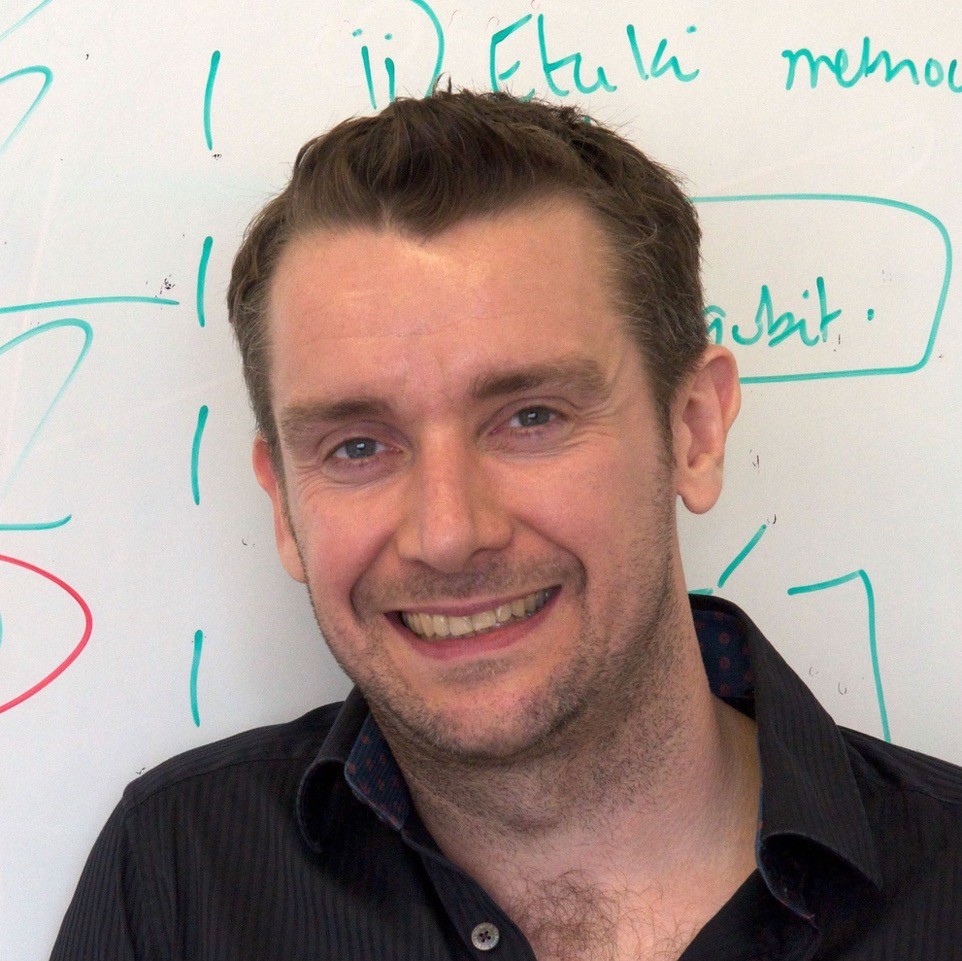
Professor Oliver Williams, University of Cardiff, UK

Professor Oliver Williams, University of Cardiff, UK
Oliver Williams received his B.Eng in 1998 and PhD in 2003, both from University College London. He then worked as a Center for Nanoscale Materials Distinguished Postdoc in the Nanocarbon theme at Argonne National Laboratory between 2003/4. Following this he moved to IMO/IMEC in Hasselt University Belgium where he worked as a Research Scientist for four years. He then accepted an “Attract” award at the Fraunhofer Institute for Applied Solid State Research in Freiburg, Germany where he was team leader of Diamond Technology for three years. He is now a Professor in Experimental Physics and Director of Research at Cardiff School of Physics and Astronomy. His research group, Cardiff Diamond Foundry, focuses on diamond growth and technology towards SAW, MEMS, Thermal Management, nanoparticles, superconductivity and quantum technologies.
| 08:00 - 08:30 |
Improved NV diamond for laser threshold magnetometry
How can magnetic field sensing with nitrogen-vacancy (NV) centres become more sensitive? By using NV diamond as a laser medium theoretical shot-noise-limited sensitivities could be improved by several orders of magnitude. However, this requires exceptional NV diamond material: a high density of NV- centres, a high NV- / NV0 ratio, good conversion efficiencies from substitutional nitrogen to NV centres, long coherence times as well as low optical absorption and low birefringence. 
Dr Jan Jeske, Fraunhofer Institute for Applied Solid State Physics IAF, Germany

Dr Jan Jeske, Fraunhofer Institute for Applied Solid State Physics IAF, GermanyJan leads the group “quantum sensing” at Fraunhofer Institute for Applied Solid State Physics (IAF). Previously he worked as a 4-year postdoc with Prof. Andrew Greentree at RMIT University in Melbourne during which he developed the concept of laser threshold magnetometry and demonstrated direct measurements of stimulated emission from NV centres for the first time. His PhD with Prof. Jared Cole was on theoretical topics regarding decoherence in quantum systems. Jan studied physics at the Karlsruhe Institute of Technology and received the German “Diplom” in 2011. Jan leads the group “quantum sensing” at Fraunhofer Institute for Applied Solid State Physics (IAF). Previously he worked as a 4-year postdoc with Prof. Andrew Greentree at RMIT University in Melbourne during which he developed the concept of laser threshold magnetometry and demonstrated direct measurements of stimulated emission from NV centres for the first time. His PhD with Prof. Jared Cole was on theoretical topics regarding decoherence in quantum systems. Jan studied physics at the Karlsruhe Institute of Technology and received the German “Diplom” in 2011. |
|---|---|
| 08:30 - 08:45 | Discussion |
| 08:45 - 09:15 |
Surface modification of diamond as an essential tool to tailor the materials properties
The surface of diamond plays a crucial role for the properties of the material, such as the electronic situation at and close to the surface, the electron affinity and the wetting behaviour. It also influences shallow colour centres in diamond. Dr Krueger will report on the group’s recent efforts to implement highly homogeneous surface terminations and to control the interaction with the surrounding media or physiological entities such as proteins. Additionally, the production of diamond nanoparticles with colour centres and the challenges related to the use of top-down mechanochemical methods will be discussed. 
Professor Anke Krueger, University of Stuttgart, Germany

Professor Anke Krueger, University of Stuttgart, GermanyAnke is a Professor at the Institute of Organic Chemistry at the University of Stuttgart. She is an organic and materials chemist and works in the field of surface chemistry of carbon nanomaterials. She has worked with E Osawa in Japan as a postdoc and started her independent career in 2002 at the University of Kiel. In 2008 she moved to the University of Würzburg and established a research programme on the synthesis, characterisation and application of nanocarbon materials. Recently, she was appointed to a chair of organic chemistry at the University of Stuttgart. Her research interests include the control of electronic properties and biocompatibility of diamond by tailored surface functionalisation, the application of nanodiamond in sensing, imaging, tissue engineering and catalysis, and the synthesis of organic model compounds for defects in diamond surfaces and graphene. |
| 09:15 - 09:30 | Discussion |
| 09:30 - 10:00 | Coffee break |
| 10:00 - 10:30 |
Diamond crystal growth for quantum sensing applications
Formation and control of electron spin of negatively charged nitrogen vacancy centre (NV−) in diamond is attracting much attention for next-generation quantum devices. For sensing applications, a relatively large amount of NV− centre is required to increase sensitivity. Typically, [NV−] of 0.1−3ppm is desired to detect weak magnetic fields. The coherence time of the electron spin T2 and T2* is another important factor for increasing sensitivity, and this value has been reported to be inversely proportional to the density of nitrogen concentration. 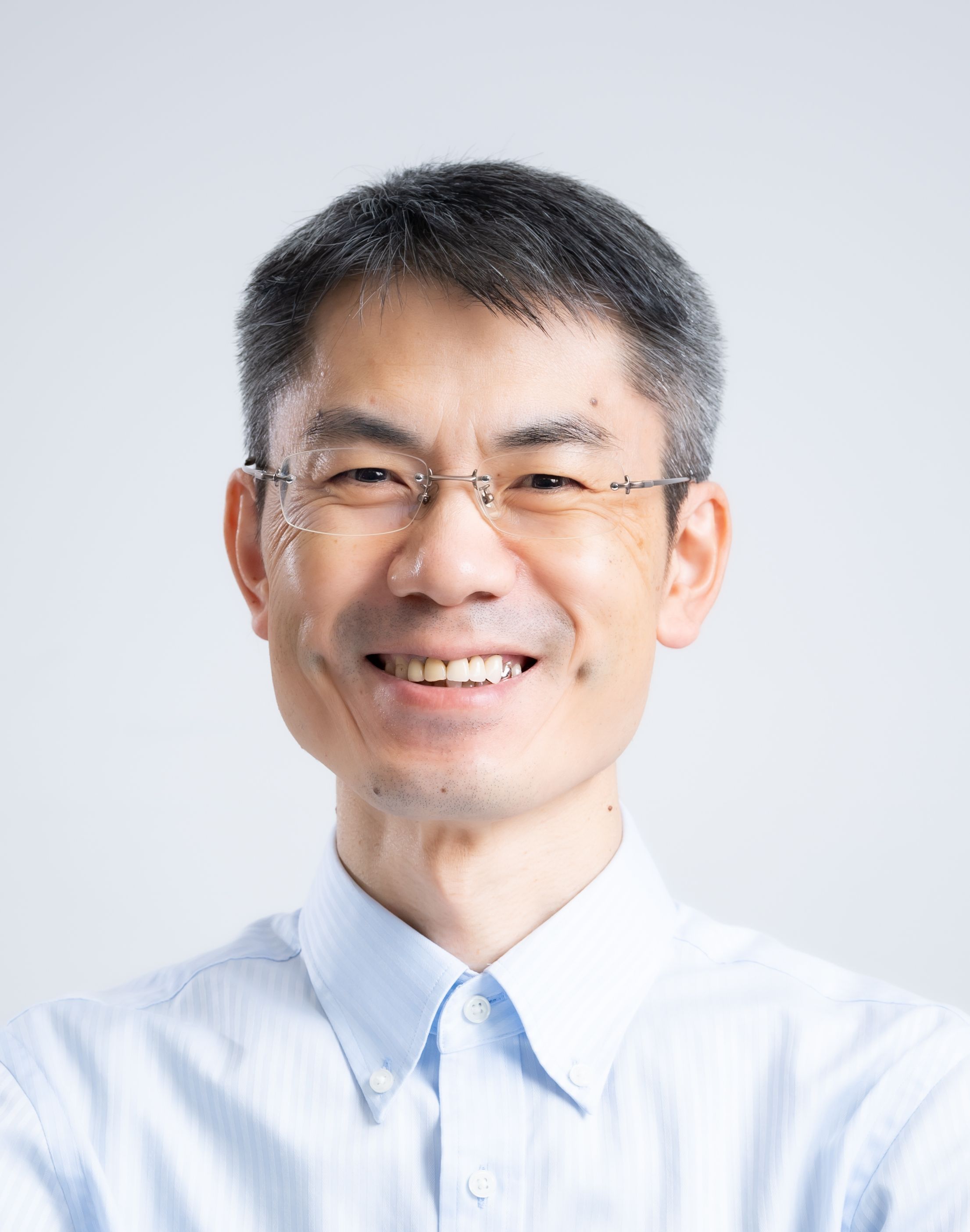
Dr Tokuyuki Teraji, Tokyo Institute of Technology, Japan

Dr Tokuyuki Teraji, Tokyo Institute of Technology, JapanTokuyuki Teraji is a chief researcher of Research Center for Functional Materials, National Institute for Materials Science (NIMS). He received the Dr. Eng. (in Material Science) degrees from University of Tsukuba in 1998. From 1997 to 2000 he was a postdoctoral researcher in National Institute for Research in Inorganic Materials (NIRIM). Then, he joined Osaka University as an assistant professor from 2000 until 2005. Since 2005 he has been working in NIMS. His research field covers thin-film growth, characterization and device fabrication of semiconducting diamond. He is currently conducting basic research on the quantum properties of color centers in diamonds. |
| 10:30 - 10:45 | Discussion |
| 10:45 - 11:15 |
Current status and prospects of solid-state quantum sensors for quantum-LEAP
Solid-state quantum sensors using diamond and SiC are expected to have various applications due to their principle possibilities such as wide field dynamic range, operating temperature range, and high special resolution down to the atomic level. In the MEXT Q-LEAP Quantum Solid-state Flagship Project, five companies, five academia, and two national research institutes have teamed up to develop a solid-state quantum sensor from basic technologies such as materials and quantum protocols to sensor modules and application prototypes. 
Professor Mutsuko Hatano, Tokyo Institute of Technology, Japan

Professor Mutsuko Hatano, Tokyo Institute of Technology, JapanMutsuko Hatano received the Dr. Eng. degree from Keio University, Japan. She joined Central Research Laboratory, Hitachi Ltd., She was a Visiting Researcher with the University of California at Berkeley, Berkeley, CA, USA, from 1998 to 2000. In 2010, she joined the Department of Electrical Engineering and , a senior aide to the president ,Tokyo Institute of Technology as a Professor and. From 20122, she is an executive member of council for Science Technology and innovation cabinet office Japan. |
| 11:15 - 11:30 | Discussion |
| 11:30 - 12:35 | Lunch break |
Chair

Dr Danielle Braje, Massachusetts Institute of Technology, USA

Dr Danielle Braje, Massachusetts Institute of Technology, USA
Biography will available soon
| 12:35 - 13:05 |
Diamond spin qubits: Quantum computing and quantum simulations
Synthetic diamond has recently emerged as a candidate material for a range of quantum-based applications including: secure quantum communication, quantum information processing and quantum sensing. In such applications, the synthetic diamond acts as a host for impurities or defects, acting like a solid-state atom trap. The quantum states of these impurities, such as the Nitrogen-Vacancy (NV) and Silicon-Vacancy (SiV) defects, can be individually manipulated. In this presentation we will show how single colour centres can be created with a few nanometres accuracy and coherent dipole-dipole coupling was employed to generate their entanglement. We will discuss further development of the field of quantum simulation with coupled nuclear spin qubits in isotopically engineered diamond. 
Professor Fedor Jelezko, Ulm University, Germany

Professor Fedor Jelezko, Ulm University, GermanyFedor Jelezko is a director of the Institute of Quantum Optics and director of the Center for Integrated Quantum Science and Technology (IQST) at Ulm University. He studied in Minsk (Belarus) and received his Ph.D. in 1998. After finishing the habilitation in 2010 at Stuttgart University he was appointed as a professor of experimental physics in Ulm in 2011. His research interests are at the intersection of fundamental quantum physics and application of quantum technologies for information processing, communication, sensing, and imaging. |
|---|---|
| 13:05 - 13:20 | Discussion |
| 13:20 - 13:50 |
Characterising temperature and strain variations with qubit ensembles in diamond
Nuclear spins associated with solid-state spin defects are compelling candidates for quantum memories and sensors. However, their current performances do not achieve the expected long coherence times, but are limited by their interactions with the spin defects that lead to variations of their intrinsic quadrupole and hyperfine interactions. Here Professor Cappellaro will present a control approach, based on an unbalanced echo, that overcomes this challenge while preserving the quantum information stored in the nuclear spin free evolution. Experimentally, she demonstrates a 20-fold T2* coherence time increase in a large ensemble of nuclear spins in diamond. The unbalanced echo can be further used to probe the temperature and strain distribution in materials and elucidate theoretical, first-principles models to predict Hamiltonian parameter variations, and their correlations, over large temperature and strain ranges. 
Professor Paola Cappellaro, Massachusetts Institute of Technology, USA

Professor Paola Cappellaro, Massachusetts Institute of Technology, USAPaola Cappellaro is the Ford Professor of Engineering at the Massachusetts Institute of Technology and a member of the Research Lab for Electronics, where she leads the Quantum Engineering Group. She received her PhD from MIT and she then joined Harvard University as a postdoctoral associate, before going back to MIT as a faculty. |
| 13:50 - 14:05 | Discussion |
| 14:05 - 14:30 | Tea break |
| 14:30 - 15:00 |
Abstract will be available soon 
Professor Milos Nesladek, Hasselt University, Belgium

Professor Milos Nesladek, Hasselt University, BelgiumBiography will available soon. |
| 15:00 - 15:15 | Discussion |
| 15:15 - 15:45 |
Panel discussion
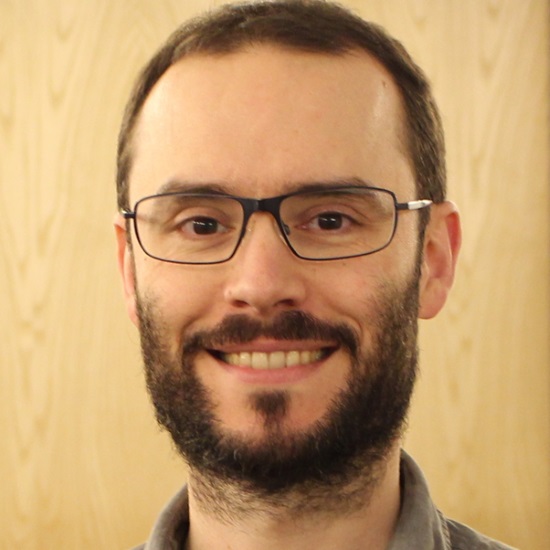
Dr Gavin Morley, University of Warwick, UK

Dr Gavin Morley, University of Warwick, UKGavin Morley leads a research group in the Warwick University Physics Department. He did an undergraduate degree and a PhD in Physics at Oxford University. He has held fellowships from the 1851 Royal Commission and the Royal Society, as well as being supported by two of the UK Quantum Technology Hubs. His research group builds quantum experiments and technologies based on nitrogen vacancy colour centres in diamond. This includes magnetometry, quantum computing chips and an experiment with a levitated nanodiamond which aims to put the nanodiamond into a spatial quantum superposition. In time this may permit a test of the quantum nature of gravity. 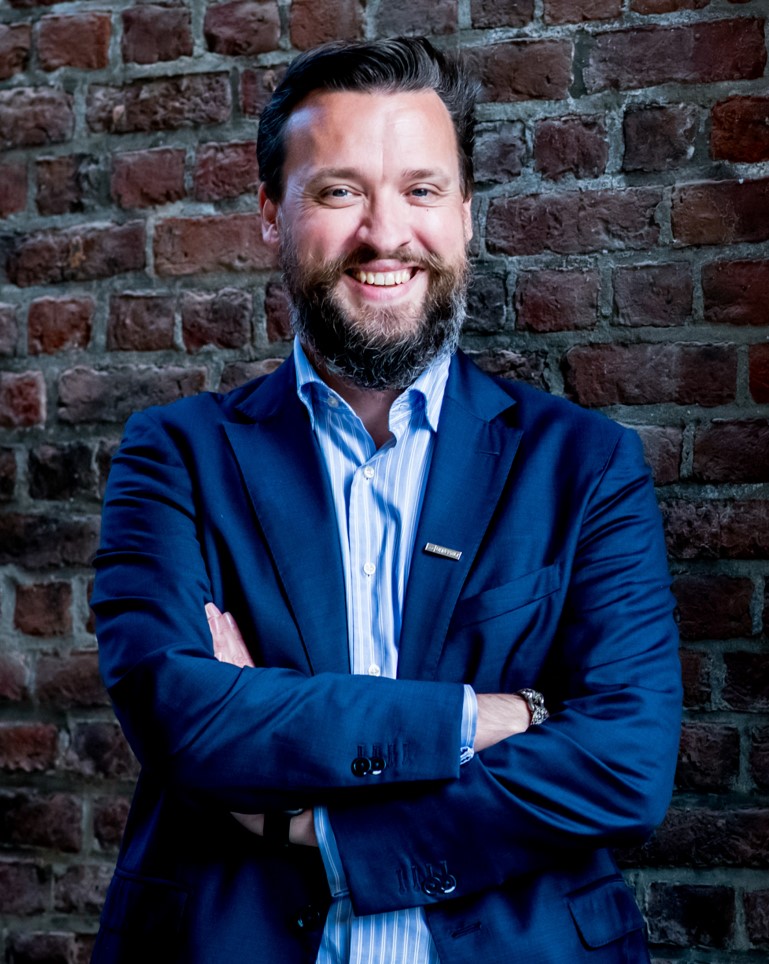
Professor Ken Haenen, Hasselt University, Belgium and IMEC, Belgium

Professor Ken Haenen, Hasselt University, Belgium and IMEC, BelgiumKen Haenen, Full Professor of Experimental Physics, is Vice-Rector Research & Internationalisation at Hasselt University, Belgium, and guest professor at IMEC, Belgium. Ken is Editor-in-Chief of Diamond and Related Materials, Section Editor of MethodsX (Materials Science), and Editorial Board Member of Scientific Reports and Physica Status Solidi. He is involved in the organisation of several leading international diamond and nanocarbon conferences, including the International Conference on Diamond and Carbon Materials (Chair), Hasselt Diamond Workshop (Co-Chair), and New Diamond and Nano Carbons (Executive Committee). He has organised MRS symposia on carbon functional interfaces at the 2011 and 2013 MRS Spring Meetings, served as a co-chair of the 2015 MRS Spring Meeting, and is currently the Chair of the MRS Program Development Subcommittee, and a member of the Early Career Professional Engagement Subcommittee. Since 1997, Ken’s research interests focus on CVD diamond, including its deposition, optoelectronic characterisation, surface functionalisation, and diamond-based devices, as part of a broader scope on carbon materials for energy harvesting and conversion. To date, he has authored over 240 peer-reviewed publications. 
Professor Shannon Nicley, Michigan State University, USA

Professor Shannon Nicley, Michigan State University, USAShannon Nicley is an Assistant Professor at Michigan State University (MSU), where she researches the growth of doped diamond and other crystalline materials for quantum applications and the discovery and characterization of solid-state qubit candidates. She completed her PhD at MSU in 2015 on the growth of boron doped diamond for high power diode applications and then continued her work in diamond growth as a postdoc at Hasselt University in the group led by Ken Haenen, where she focused on phosphorus doping. In 2018 she became a Royal Society Newton International Fellow at the University of Oxford, where she broadened her experience into quantum optics in the group led by Jason Smith. She is now the PI of the Diamond and Quantum Materials Group (DQM) in the newly founded Quantum Optical Devices (QuOD) lab at MSU, where she is also affiliated with the Fraunhofer USA Center Midwest. |
